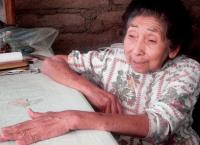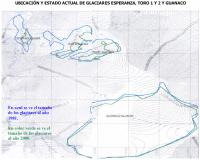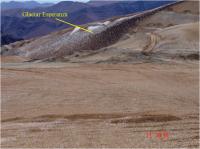It's Time for Second Quarter Reporting: What will Barrick hide from their shareholders this time? , | |||||
August 2 marks the publishing date of Barrick Gold's second quarter results. With profits down by 14 percent, the Pascua Lama project delayed, and Norway's pension fund considering pulling their investment on ethical grounds, things aren't looking good for this gold mining giant. But, are any of these developments a big surprise? There are many shareholders who might think so, but that is only because Barrick has been systematically hiding vital information from them through glaring omissions and outright lies.
Glaring Omissions The first place to look for Barrick's reporting on issues important to shareholders would be their 2006 annual report, seemingly complete with a section listing "Litigations and Claims." However, Barrick failed to even mention a costly lawsuit with landowner Rodolfo Villar, a stumbling block that could prove costly (around the tune of $300 million) and one which will possibly delay the Pascua Lama project, a proposed mine on the border of Chile and Argentina, according to the Valaparaiso Times.
But that's not all, Barrick also failed to mention a 2005 complaint
filed with the Organization of American States (OAS) on behalf of the
Diaguita Huascoaltino indigenous community. It alleges that the Pascua Lama
project poses a grave risk to the subsistence rights of the Diaguita
indigenous communities in the area, and that the Chilean government
would be breaking its international commitments if it approves the
project. The Diaguita Huascoaltinos also had a lawsuit
filed in 2001 that lays claim to disputed land needed for the project.
Despite this litigation, formal complaints, and two letters written by
Diaguita leadership to Barrick and the President Bachelet of Chile in
2006, the Diaguita Huascoaltinos Indigenous group are not mentioned once in any of
Barrick's Annual reports since 2001.*
In the U.S., Barrick failed to mention a lawsuit brought by the Te-Moak Tribe, the Western Shoshone Defense Project, and Great Basin Mine Watch against the U.S. Bureau of Land Management that Barrick is also party to. At the center of the lawsuit is the Bureau of Land Management�s approval of Cortez Gold Mines� gold mining exploration proposal on and around Mt. Tenabo and Horse Canyon, important spiritual areas for the Western Shoshone. It causes one to wonder if Barrick will mention to their shareholders that the 135-year-old hard-rock mining law that grants Barrick cheap mining in the U.S. is now being reviewed by the U.S. Congress. A change in the law could impose the first-ever royalty fees and environmental restrictions for mining on public land.
Outright Lies
Beyond the omissions � of which there are too many to mention � there
are also lies that Barrick continues to peddle to the press about their
operations. Among the most visible, literally, is the mystery of the
depleted glaciers in near Pascua Lama. This issue has recently been getting a lot of press in both Chile and Argentina,
as a recent study has revealed a 50 to 70 percent depletion in the
glaciers near Barrick's exploration activity. While Barrick
continuously blames Global Warming, a simple comparison with other
glaciers in the same area (but not near Barrick's activities)
illustrates that this is not the case. (see picture) The real reason for the depletion is the dust kicked up by the construction activity, acccording to Lu�s Faura Cortes, a Councilperson from Alto del Carmen. According to Faura, the dust kicked up from Barrick's activites settles on the glaciers, causing them to absorb heat rather than reflect the sun rays, and thus melt at a faster rate. (see picture) Will anyone hold Barrick accountable for these lapses in their own
reporting? WIll Barrick finally own up to the difficulties that they
face and acknowledge resistance to their mining operations? Or will
this be another Bre-X case
where shareholders are merely left with the lesson and reminder of the
lax regulatory standards that Canada's mining corporations face.
�
* a remark about methodology, I downloaded every annual report since 2001 and used a search function to find mention of the Diaguita community. |





